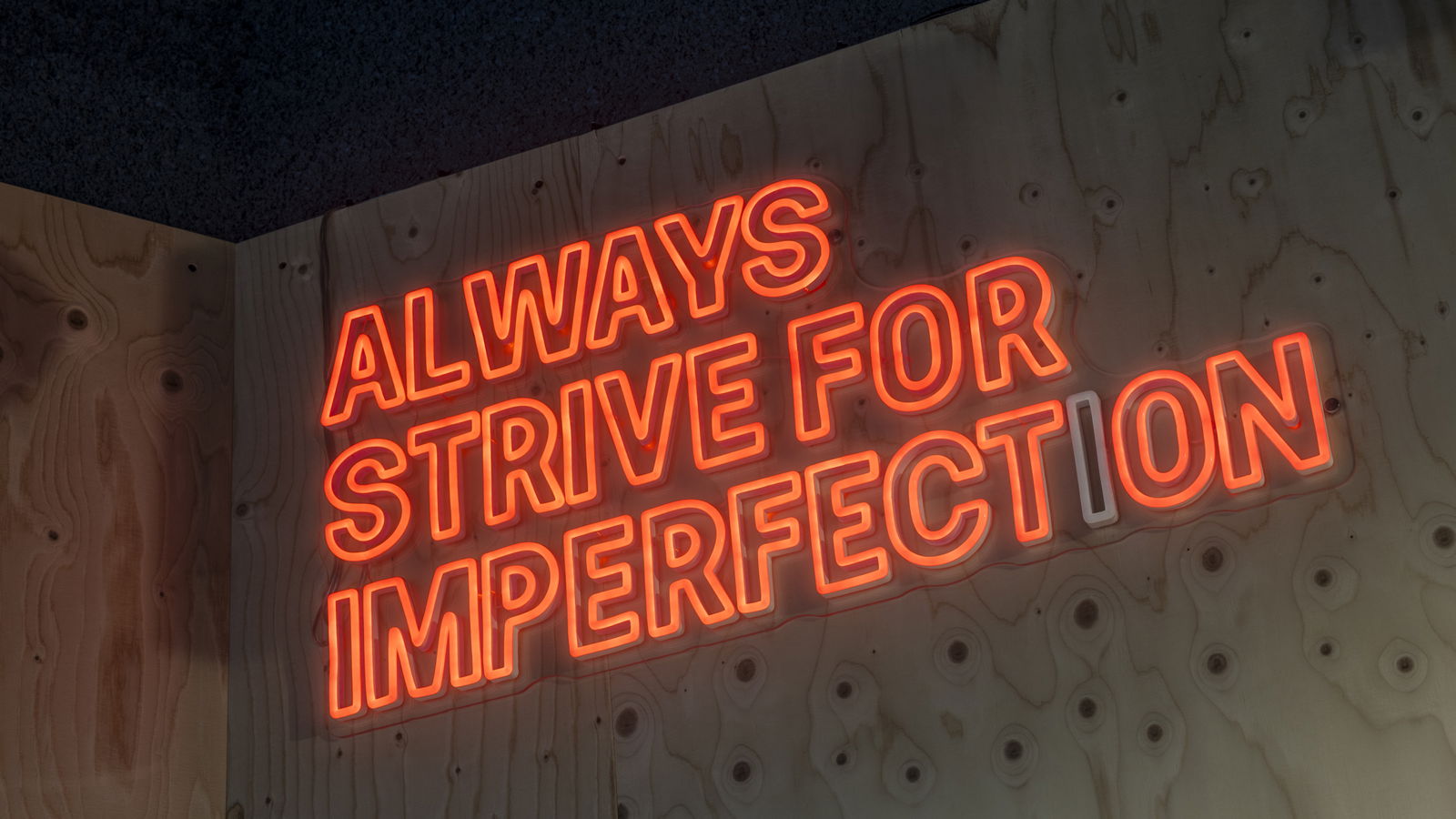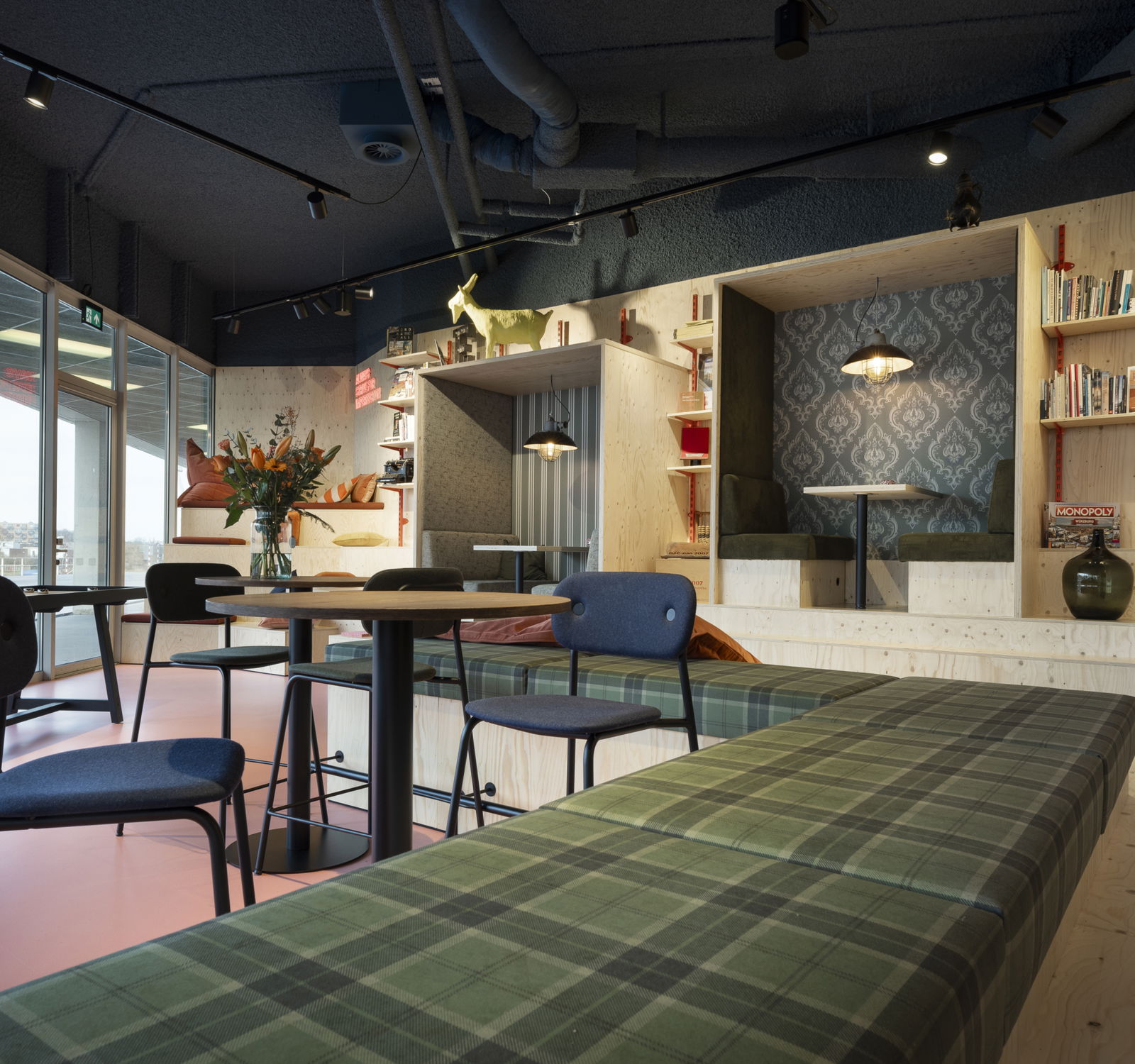Debilitating drop in youth happiness
At one time or another, we’ve all experienced that uneasy feeling when you scroll past picture-perfect social posts. Research¹ shows that social media platforms often promote an unrealistic standard of flawlessness through filtered and meticulously staged images, inadvertently impacting users’ emotional well-being. The 2024 edition of the World Happiness Report² shows “disconcerting drops” in youth happiness – especially in North America and Western Europe³. There are ample indicators that social media can pose a profound risk to the mental health and well-being of children and adolescents⁴. However, the stunting effects of perfection aren’t just reserved for cyberspace – they are felt in physical spaces as well.
Distancing perfection
Perfect places intimidate and stifle expression. Flawless architecture, sleek and sterile interiors devoid of imperfections inadvertently create a divide. In contrast, spaces that embrace flaws tell a story, inviting people to connect. The originator of the term Third Places, the late sociologist Ray Oldenburg, describes ‘low profile’ conditions for successful places in his inspiring work.⁵ “A nonpretentious decor corresponds with and encourages leveling and the abandonment of social pretense,” he states. And: “Where there is the slightest bit of fanfare, people become self-conscious. Some will be inhibited by shyness; others will succumb to pretention. When people consider the establishment the ‘in’ place to be seen, commercialism will reign. When that happens, an establishment may survive; it may even thrive, but it will cease to be a third place.”

User-based design demands an exceptional experience
When online and perfect environments can harm someone’s well-being, we can at least make sure that people feel at ease and comfortable in offline settings, right? By integrating imperfections, we not only connect with the space but also with each other. Something that is not perfect has something different about it… it’s an exception. Imperfect elements therefore help craft exceptional designs. For us at includi, perfection lies in meeting the wants and needs of our diverse clients and users as closely as possible in a technical, high-quality interior design. Next to that, our design philosophy revolves around accessibility and inclusivity, enhancing the unmistakable “home away from home” feeling.
We generate imperfect experiences by:
- Incorporating unexpected and whimsical design elements
- Using repurposed and low-key materials; our materials are credible, unpolished and tell a story
- Blending the area’s history into the design, a fusion of old and new
- Adding re-used and refurbished furniture which shows signs of aging
- Artisanal design specials, handcrafted by craftsmen and women
- Infusing personal items of users into the space
- Designing for programmability and allowing users to “customize” the interior to their preferences
- Providing differences/variation in both seating typologies and material use
- Creating unexpected spaciousness where users are able to discover.
Footnotes
- The #StatusOfMind study (2017), undertaken by the Royal Society for Public Health (RSPH), surveyed nearly 1,500 young people between the ages of 14 and 24, to assess how social media platforms affected health and wellbeing, including anxiety, depression, self-identity and body image.
- An annual barometer of wellbeing in 140 nations coordinated by Oxford University’s Wellbeing Research Centre, Gallup and the UN Sustainable Development Solutions Network, https://happiness-report.s3.amazonaws.com/2024/WHR+24.pdf
- Source: https://www.theguardian.com/society/2024/mar/20/young-people-becoming-less-happy-than-older-generations-research-shows
- A report by Dr. Vivek Murthy (2023) cites a “profound risk of harm” to adolescent mental health and urges families to set limits and governments to set tougher standards for use. https://www.hhs.gov/sites/default/files/sg-youth-mental-health-social-media-advisory.pdf
- Oldenburg, R. (1989) The Great Good Place

World Book Day 2023



